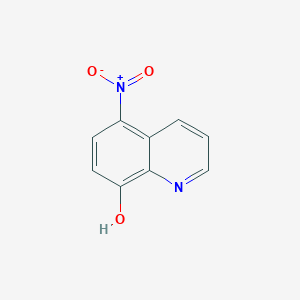Is PD - (L) 1 combined with CTLA-4 worth more expectation?
-
Last Update: 2019-11-20
-
Source: Internet
-
Author: User
Search more information of high quality chemicals, good prices and reliable suppliers, visit
www.echemi.com
When CTLA-4, Pd - (L) 1 antibody drugs targeting at T cell co suppressor molecular signals are widely used in tumor therapy, it is inevitable to imagine whether the combination of the two drugs can play a greater role CTLA-4 is located on the surface of T cells When T cells are overactivated, CTLA-4 and B7 of CD28 competitive binding antigen-presenting cells reduce the activity of T cells and can not kill cancer cells At the same time, PD-1 will be produced when T cells are overactivated When PD-L1 of cancer cells is combined with it, it will inhibit the activity of T cells and make cancer cells avoid the killing of T cells Therefore, CTLA-4 and PD-1 antibody drugs, one is given antigen-presenting cell signal to activate T cells in the early stage, and the other is to prevent cancer cells from escaping from depleted T cells Therefore, the combination of the two is expected to balance the activity of T cells to improve the efficacy Nature recently announced 295 drug targets for clinical trials with combination of PD-1 / PD-L1 antibody drugs The number of clinical trials of CTLA-4 related drugs ranked second, second only to chemotherapy Number of clinical trials of different drugs combined with PD - (L) 1 antibody drugs (source: Nature Reviews Drug Discovery) At present, the combination of CTLA-4 + PD - (L) 1 inhibitors has been explored the most, and the two immunosuppressive point inhibitors of BMS, ibilimumab and nivolumab, have made the fastest progress, starting from the three indications of melanoma, renal cell carcinoma and colorectal cancer with high MSI / MMR deficiency that have been approved by IPI + nivo Combined therapy of nivo1mg / kg + IPI 3mg / kg q3w for 4 cycles, and then nivo3mg / kg q2w single drug maintenance treatment until disease progression or intolerable toxicity, has become the first-line treatment for adolescents and adults over 12 years old regardless of BRAF mutation On October 1, 2015, FDA approved the first-line treatment of BRAF V600 mutant wild-type metastatic melanoma (based on the results of checkmate-069 test); On January 23, 2016, FDA approved the first-line treatment of metastatic melanoma regardless of BRAF mutation (based on the results of checkmate-067 test); On July 24, 2017, it was approved for the first-line treatment of metastatic melanoma in adolescents over 12 years old regardless of BRAF mutation This year's ESMO announced a new breakthrough in the 5-year survival of checkmate-067 trial In the first-line treatment of patients with advanced metastatic melanoma, nivo + IPI improved the overall survival time (OS) compared with IPI and nivo, respectively The 5-year overall survival rates of the three groups were 26%, 44% and 52%, respectively, which increased 5% of the 5-year survival rate of advanced metastatic melanoma 10 years ago to 10 times of the unprecedented rate, but In the combination group, the adverse reactions of 3 / 4 grade doubled compared with that of nivo and IPI, 59%, 23% and 28%, respectively 5-year follow-up survival curve of checkmate-067 trial The therapeutic effect of IPI + nivo on asymptomatic brain metastasis of advanced melanoma showed that more than 1 / 3 of patients with advanced melanoma had brain metastasis at the time of diagnosis, and up to 75% of patients died of brain metastasis The checkmate 204 trial included 101 asymptomatic patients with brain metastasis, which was consistent with the first-line treatment The median follow-up was 20.6 months, and the rate of extracranial and extracranial reactions was 54% and 49% Therefore, for small volume and low number of metastases, asymptomatic patients with brain metastasis may not need stereotactic radiation surgery to gain survival benefits IPI + nivo is more effective as a new adjuvant for stage III melanoma: only nivo and pembro are approved for adjuvant treatment after local melanoma surgery In the opacin trial, IPI + nivo is first explored as a new adjuvant or adjuvant treatment for stage IIIB / C melanoma patients The results show that the new adjuvant and adjuvant effects of OS in 30 months are 90% and 67%, respectively IPI + nivo was approved for the first-line treatment of advanced RCC on April 16, 2018, adding more evidence for immunotherapy as the first-line treatment of advanced RCC In the checkmate-214 trial, IPI + nivo reduced the risk of death by 37% compared with sunitinib, and the updated long-term survival follow-up results published in August this year were the same The median follow-up was 32.4 months, but the OS of IPI + nivo was not reached, and that of sunitinib group was 26.6 months Efficacy of immunotherapy in the first-line treatment of renal cell carcinoma At present, the first-line treatment drugs for advanced renal cell carcinoma are mainly VEGFR inhibitors IPI + nivo is the only dual immunotherapy with obvious survival advantage, but it is only used in the middle and high-risk patients This part of the market is likely to be replaced by the combination of axitinib and avelumab or pmebrolizumab, which can be used in the whole patient population Many low-risk patients are still driven by VEGF Nivo + low-dose IPI was approved for the second and third line treatment of high microsatellite instability (MSI-H) / MMR defective solid tumor by pembro and nivo alone on July 11, 2018 Tumor types and stages with MSI high / MMR deficiency Effectiveness of immunotherapy for colorectal cancer with high MSI / MMR deficiency In view of the fact that the high MSI / MMR defects mainly exist in less than 10% of colorectal cancer, endometrial cancer and gastric adenocarcinoma, the population market is not large, but checkmate-142 updated the positive data of one-year survival of the first-line treatment population in the trial in 2018, which has the opportunity to advance to the first line Since pembro combined with chemotherapy was first approved for the first-line treatment of metastatic NSCLC, BMS also hopes to enter the first-line treatment, which is quite a twists and turns, looking forward to the final results On October 22, 2019, BMS announced that nivo + low-dose PI was combined with two rounds of chemotherapy, and checkmate-9la, a three-phase clinical study for first-line treatment of advanced NSCLC, reached the main end point of total survival The design of this trial is similar to checkmate-227part1, but the difference is that the combination of nivo and IPI also adds two chemotherapy cycles Included 2200 lung cancer patients, 3 first-line treatment phase III combined checkmate 227 According to the results of checkmate 227 test published at present, we are worried and overjoyed: first, nivo + chemotherapy in part 2 does not show survival advantage compared with chemotherapy; second, part Although nivo + IPI in high TMB group was significantly longer than that in chemotherapy, it was found that there was no difference in OS between high TMB group and low TMB group according to the requirement of EU review center when the effectiveness data of low TMB group was supplemented Then BMS had to withdraw the listing application of nivi + IPI in NSCLC in high TMB group The high level tumor of TMB represents that the number of new tumor antigens that can be recognized by the immune system in tumor cells may be more, and it was considered to be a more promising biomarker in I-O treatment However, from the current clinical evidence, as a biomarker in lung cancer, TMB has been doused with cold water: first, AZ has been incorporated into TMB ≥ 20 The Neptune trial failed in the MUT / MB population, and the exploratory analysis of ttmb published at this year's ESMO meeting in the first-line study of keynote-189 and 021 in patients with metastatic NSCLC showed that TMB could not predict the efficacy of pembro, and there was no correlation between TMB and PD-L1 expression level The consolation to BMS is that nivo + IPI is superior to chemotherapy in PD-L1 ≥ 1% of part 1a population, but pembro + chemotherapy has been approved in this population, and the toxicity of nivo + IPI is greater Unless OS can surpass it more obviously, it is difficult to persuade patients to choose Effectiveness of NSCLC first-line immunotherapy test The progress of nivo + IPI in small cell lung cancer was lower than expected Although the orr of nivo ± IPI vs nivo single drug in checkmate 032 trial was improved: 21.9% vs 11.6%, there was no significant difference in OS between the two groups, and the level 3 / 4 treatment-related adverse events in the combined group were three times higher than that of nivo single drug There are many other indications in the early exploration to show the advantage of tumor response The new results published recently have the following indications Mesothelioma: pleural mesothelioma is very aggressive At present, there is no standard therapy for first-line pemetrexed and platinum based chemotherapy Nivo + IPI has a survival advantage over nivo alone, with MOS of 15.9 and 11.9 months, respectively This is a good omen At present, phase III trial is under way, with rapid progress Gastroesophageal cancer: the checkmate-032 trial explored two different dosage combinations of nivo single drug and nivo + IPI for patients with advanced gastroesophageal cancer after at least one line of treatment PFS reached 8% in the single drug group and 17% in the combined group at 12 months Compared with pembro approved for the second-line treatment of esophageal squamous cancer, PFS of pembro single drug was 15% and 9% respectively in December Prostate cancer: metastatic prostate cancer expressing ar-v7 is an aggressive phenotype with a low survival rate Ar-v7 positive tumors may be rich in DNA repair defects (DRD), which may make them more sensitive to the blocking of immune checkpoints In a nivo + IPI phase II test, it also shows the preliminary effect on ar-v7 metastatic prostate cancer with DRD Sarcomas: in alliance a091401 trial, patients with metastatic sarcomas who have received at least first-line systemic treatment were included Two different combined doses of nivo + IPI were explored The results showed that orr in combination group was better than that in single drug group, 14% and 5%, respectively In the course of using immunotherapy, the toxicity caused by over activation of immune system due to miss target effect is called immune related adverse reaction Irae It is found that the Irae of CTLA-4 combined with PD - (L) 1 antibody is higher than that of single drug in clinical trial data and pharmacovigilance database According to the WHO pharmacovigilance database, the incidence of fatal Irae was 1.23%, 1.08% and 0.36% in the combination of CTLA-4 + PD - (L) 1 antibody and CTLA-4 antibody, respectively The main causes of death were colitis, myocarditis, hepatitis, pneumonia and myositis, in which myositis, especially myasthenia, and myocarditis occurred at the same time Although the median time from symptom onset to death is 32 days, there is no biomarker that can reliably predict Irae Depending on the type of tumor and treatment, Irae may occur at any time during clinical treatment The occurrence and time of Irae of ipilimumab + PD-1 antibody For 3 / 4 grade Irae, glucocorticoid injection or stronger immunosuppressant such as TNF - α inhibitor such as infliximab are often needed At this time, other adverse reactions such as fatigue or weight gain may be considered At present, with the application of CTLA-4 + PD - (L) 1 antibody in more and more advanced cancer patients, the economic problems related to toxicity management are also worthy of attention There are also some explorations on the management of combined toxicity, including the adjustment of administration mode For example, the treatment of PD-1 antibody directly after the short-term CTLA-4 antibody may have similar efficacy, but the toxicity will be reduced, or the side effects caused by the combination of CTLA-4 and PD-1 antibody, especially the disease degree of hepatitis and colitis, can be effectively alleviated by the preventive use of TNF inhibitor, or even Enhance the anti-tumor effect Other CTLA-4 + PD - (L) 1 antibody combinations under study include durvalumab + tremelimumab of AstraZeneca, agen1884 + agen2034 of agenus, onc-392 + pembrolizumab of oncoimmune, cemiplimab + epilimumab of regenerator, and regn 4659 + cemiplimab of CTLA-4 There are other double target products for CTLA-4 + PD-1, among which the progress of double antibody or fusion protein is relatively fast, which can not achieve the effect of single specific antibody by blocking the additive / synergistic effect produced by the two targets or connecting the two receptors at the same time At present, no clinical results have been published Part of clinical stage CTLA-4 + PD - (L) 1 double target products
This article is an English version of an article which is originally in the Chinese language on echemi.com and is provided for information purposes only.
This website makes no representation or warranty of any kind, either expressed or implied, as to the accuracy, completeness ownership or reliability of
the article or any translations thereof. If you have any concerns or complaints relating to the article, please send an email, providing a detailed
description of the concern or complaint, to
service@echemi.com. A staff member will contact you within 5 working days. Once verified, infringing content
will be removed immediately.







